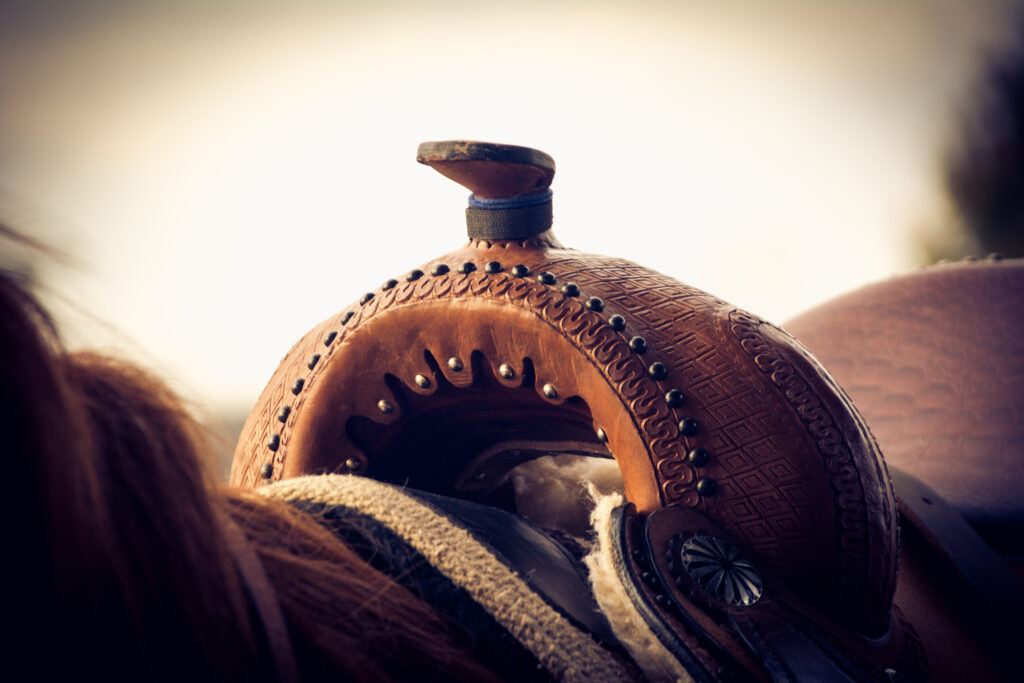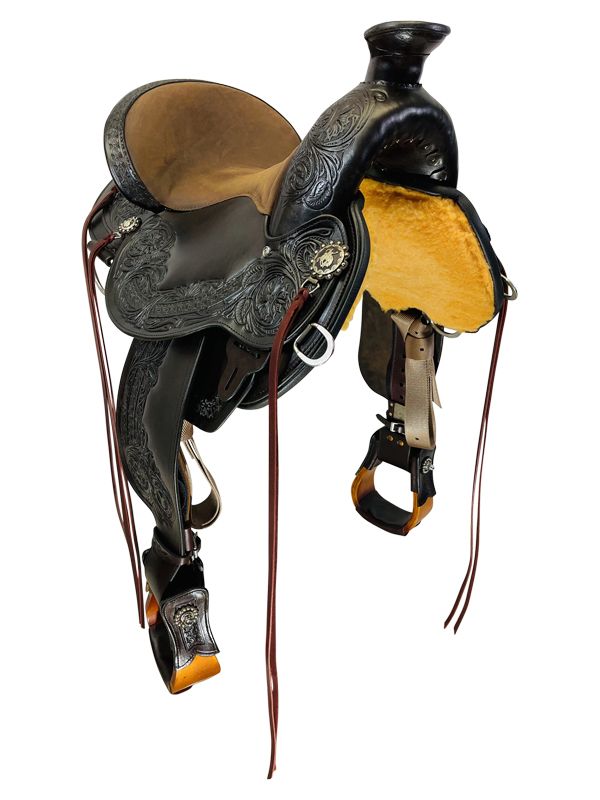Horse back pain symptoms are symptoms you need to be able to interpret correctly on a continual basis. The last thing you want to do is ride when your horse is suffering from back pain.
If you’ve ever had back pain, you can imagine how it would feel if someone tossed a heavy saddle on your back, climbed on, and expected you to perform for any length of time. How awful. This article will discuss back pain symptoms in horses, what to watch for, and ways to help your hurting horse.
Tip #1 Recognizing Horse Back Pain Symptoms
My first tip is that you have to know what to look for when your horse has back pain.
If your horse’s back is hurting, one of the first things you may notice is a decrease in performance. This could be an obvious change, or it could be more subtle and only present when the horse makes a particular movement. He may have a shortened stride as well.
As pain becomes worse, so will the symptoms. A horse with back pain may start presenting behavioral problems such as rearing and bucking. He may also just stop and refuse to move forward.
Pain may show up when you groom your horse and run brushes over his back. It’s possible that a horse will be touchy simply because they are sensitive to grooming. But you know your horse’s grooming behavior. If he starts flinching when he’s never done it before, he may have pain in his back.
Another sign of back pain is reluctance to be saddled. He may also have an abnormal gait after a saddle is girthed up.
Any of these symptoms can indicate pain in your horse’s back. You should take this seriously and not ignore what your horse is telling you.
Tip #2 Understand The Types of Horse Back Pain Symptoms
My second tip is to understand that there are different types of horse back pain. Equine back pain is usually from neurological or musculoskeletal sources. The symptoms will look the same no matter which kind of pain your horse has.
So determine what type of pain it is. You may need to see a horse vet to help you out with this.
Read below to find out the most common causes of horse back pain.
Common Causes of Horse Back Pain
There’re some common causes of pain in a horse’s back. These can include:
1) Injury
2) Pinched spinal nerve
3) Arthritis in the spine
4) Bad saddle fit
5) Lameness in a hind-limb
6) Vertebrae or spinal nerve tumor(s)
Tip #3 Determine The Appropriate Kind of Treatment

Your veterinarian will have to examine your horse to make a determination of the type of back pain and the exact location before treatment can begin.
If the pain is mild or it’s just soreness, an anti-inflammatory medication and stall rest may be all your horse needs. If the pain is more acute, injected steroids or other anti-inflammatory medications may be needed along with stall rest.
Muscle relaxers and alternative therapies may also be used for some situations. For situations such as a spinal tumor, a full recovery may not be likely.
A Word About Saddle Fit and Back Pain
If the cause of your horse’s back pain can be traced to an ill-fitting saddle, you’ll need to get a properly-fitted saddle for your horse. Fortunately, this cause of back pain is easy to correct.
A saddle that doesn’t fit your horse can pinch, rub, and cause pressure wounds along the withers and back. If your horse is small and short-backed, a too-big saddle’s skirts can rub your horse’s hips. In addition, the saddle needs to fit you as well.
If the saddle doesn’t fit you, it will throw you off balance and interfere with your horse’s movement. An unbalanced rider can also cause a horse to have back pain.
Do You Have The Right Type of Saddle?
To avoid horse back pain, you’ll want to make sure you have the correct type of saddle.
For instance, a barrel horse should have a saddle meant for barrel racing. An endurance horse should have a saddle made for long hours in the saddle. And a trail rider should have a saddle made for hours of riding over rough terrain.
Your saddle is the most important piece of equipment you’ll buy for you and your horse. Pick the right one, and you’ll both ride in comfort.
Horse Back Pain Symptoms Conclusion
A horse with back pain is unsound and unsafe to ride.
Some back pain can be avoided with common sense, such as proper saddle fit. Once pain has been diagnosed, treatment can begin. After your vet gives clearance, you can begin working with your horse again.
If your saddle is the cause of your horse’s pain, you’ll have to get a saddle that fits. There’s no way to make an ill-fitting saddle work for your horse. Back pain will take your horse out of the game.
But in most cases, proper care, and a proper saddle, will get your horse back to his former level in his discipline. Be patient and follow your veterinarian’s directions to get your horse pain-free and ready to ride once again.




This was a very informative article about back pain in horses. I also find that if you do your research well regarding the correct saddle, the horse will perform to its full potential. I wasn’t aware that an ill-fitted saddle will impact your horse’s performance.
The trail saddle in this article looks very comfortable and has all the features to help your horse feel comfortable and enjoy the ride. I have a question though. When your horse does seem to have back problems do you have any suggestions on an anti-inflammatory?
Hi Ammari. Thanks for your comment, and thanks for your question. I am not an equine vet, so I can’t recommend an anti-inflammatory, as that would require me to specifically diagnose, which I am not qualified to do. But I do know that many, if not most, horse back problems stem from ill-fitting saddles. So, do your research, and invest in the right saddle for your horse.